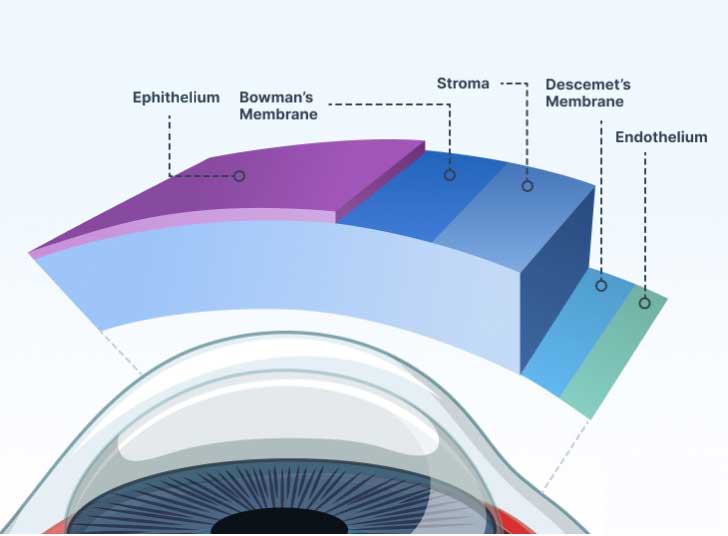
Corneal diseases are a group of rare, genetic eye disorders. With corneal diseases, abnormal material builds up in the cornea (the clear, front window of the eye). Most corneal diseases affect both eyes. They progress slowly and run in families.
The cornea has five layers:
Corneal diseases are caused by the build-up of material in one or more layers of the cornea. The material may cause the cornea to lose its transparency. This can cause loss of vision or blurred vision.
There are more than 20 different types of corneal diseases. They are generally grouped into three categories:
The symptoms of corneal disease depend upon the type of corneal dystrophy. Some people experience no symptoms. In others, the build-up of material in the cornea causes it to become opaque (not clear). This leads to blurred vision or vision loss.
If your ophthalmologist thinks you have a corneal dystrophy, they will examine your eye. They will also ask about your family history of eye disease.
Your ophthalmologist will use a slit lamp microscope to shine a thin, bright sheet of light into your eye. This helps the doctor examine the front part of your eye thoroughly.
If someone has no symptoms, a routine eye examination may show that they have corneal diseases. In some cases, genetic testing can identify corneal diseases.
Treatment for corneal diseases depends on:
If you do not have any symptoms, your ophthalmologist may monitor your eyes closely to see if the disorder is progressing. In other cases, eye drops, ointments or laser treatment may be appropriate.